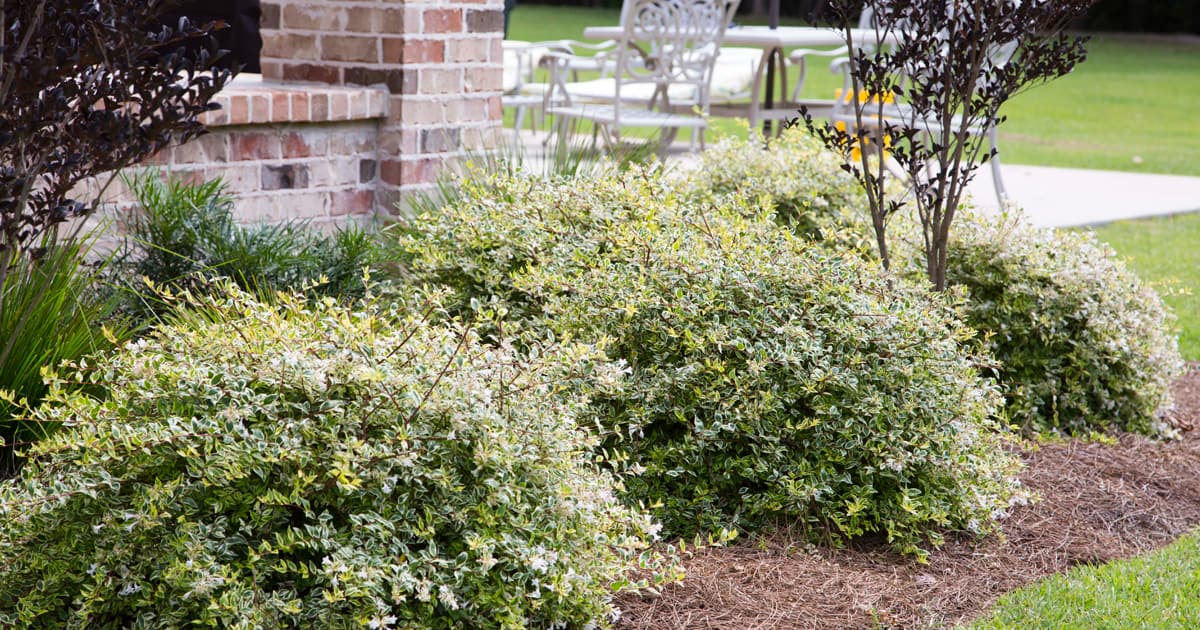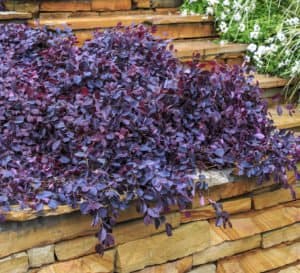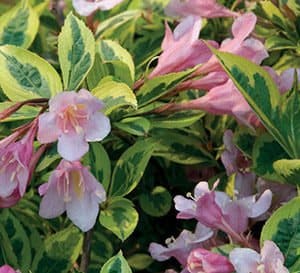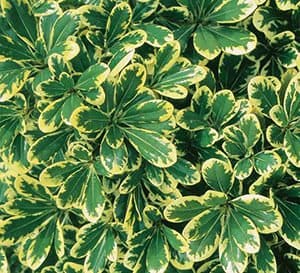By carefully selecting and pairing plants, gardeners can create drama throughout the landscape using vibrant foliage. Variegated foliage in particular is a powerful landscape design tool and one that can be used to great effect. Like all good things, variegation can also be overutilized. Observe variegation patterns and exercise restraint by focusing on compatible forms, patterns and colors. Here are some tips to get started.
Consider patterns when pairing

Variegation takes on many different forms with some plants showing speckling patterns such as those of ‘Radiance’ Abelia, and others bearing stripes as found in ‘Everest’ EverColor® Carex. Variegation may appear as streaks, spots or irregular blotches. Each can be beautiful, but not all types of variegation combine well. Pay careful attention to variegation patterns when placing more than one type of variegated plant in close proximity to another.
Make a statement with variegated species

Variegated plants can be used as accents in a planting bed. For example, Twist of Pink™ Variegated Oleander makes an exceptionally bold and handsome specimen with its striking foliage and bright blossoms. On a smaller scale, Rainbow Sensation™ Weigela makes a strong statement in containers or garden beds. Use supporting vegetation to reinforce and add emphasis to variegated specimens.
Create a background with evergreens

A backdrop of evergreens in shades of green sets the stage for variegated plants to perform. Placing gold-variegated foliage against a deep green background creates depth and movement in a planting. Solid-colored foliage can also work well. Consider how brilliant gold variegation, such as ‘Sunshine’ Ligustrum, pops against a backdrop of purple- or burgundy-foliaged companions like Purple Diamond® Semi-dwarf Loropetalum or Purple Pixie® Dwarf Weeping Loropetalum.
Provide solids as an accent

Accentuate variegated foliage by planting alongside shrubs with solid-colored foliage. Given the wide selection of foliage plants available, gardeners can draw from nearly any color palette in the landscape. Support material can be used in many ways. Group low-growing plants such as Evercolor® ‘Everillo’ Carex or Purple Pixie® Dwarf Weeping Loropetalum in front of variegated shrubs to highlight the specimen. Place a colorful grass or shrub alongside the specimen on one or both sides to heighten the plant’s impact. Or use color more subtly, adding small pops of color throughout a planting.
Don’t be afraid to plant in mass

Let us not shy away from planting variegated shrubs in mass. With Olive Martini™ Elaeagnus we have a gold-variegated shrub that serves beautifully as a hedge or screen. Mojo® Pittosporum is magnificent as a mass planting and can truly brighten the shade garden. For sunny areas, consider a band of Miss Lemon™ Abelia or a bright border of ‘Meerlo’ Lavender.
Create continuity through design choices
Planting shrubs with colorful foliage intermittently throughout the length of a planting bed (ideally, throughout the entire landscape) creates continuity. Subtle repetition of color can work wonders in uniting a planting design. Work within a selected color scheme that complements the home to create a harmonious landscape.














